Aliens, the Apocalypse, and the CIA: Tribulation 99
One of the best things about being a part of the Black Gate community is being able to share things here that I could never bring up in everyday conversation with any of the fine, upstanding, ordinary folks that I spend most of my time with. They just wouldn’t understand — but I know that you will.
For instance, if the topic should turn to films, and should further narrow to the strange, the odd, the offbeat, most people might bring up that bizarre movie where Samuel Jackson never once said the word… well, you know, or the one where Ben Kingsley briefly pretended that he wasn’t there just for the paycheck, or that really nutty one where Adam Sandler spent thirty consecutive seconds actually trying to act.
Whatever gets mentioned, though, I know with moral certainty that no one will bring up Tribulation 99, a 1992 film written and directed by underground filmmaker Craig Baldwin. This is probably because not one person in a million has even heard of it. But in a lifetime spent watching really weird movies, it is without a doubt one of the weirdest things I have ever seen. So… do you want to hear about it? Of course you do. That’s why you’re here.
Craig Baldwin
Tribulation 99: Alien Anomalies Under America (to give it its full title) is a documentary chronicling the activities of the CIA in Latin America from the organization’s formation after World War Two through the fifties, sixties, seventies, and eighties, during which time Guatemala, Cuba, Chile, Grenada, and Panama all felt the heavy hand of their Good Neighbor to the North. So far, so dull, right? You can see that sort of thing any day on PBS or the History Channel: a lot of sober talking heads in bad suits and worse haircuts heatedly indicting — or uneasily defending — U.S. Cold War foreign policy, enlivened (or not) by heaping helpings of the usual stock footage.
Well… no. You see, Craig Baldwin has an explanation for the CIA’s activities — indeed, for its very existence — that’s rather different than the usual left-wing litany of economic imperialism, militarism, and lust for cultural hegemony. The real explanation for all of the CIA’s south of the border shenanigans is that, for half a century, the agency has been working overtime to protect us from the aliens that live at the earth’s core.
You see, about a thousand years ago, Quetzacotal, “a hidden planet orbiting the sun exactly opposite the earth” had an atomic war that blew it to smithereens, its remnants eventually forming “the asteroid belt between Mars and Jupiter.” (And you’re still wondering whether Pluto is really a planet or not — get with it, man!)
The good news is that, “despite massive genetic damage, an elite corps of Quetzals managed to escape in their disc-shaped spacecraft to earth.” The bad news is that “the atomic blasts had so irradiated their bird-like bodies they cannot bear the additional radiation of sunlight.” Luckily for the fleeing aliens, they locate an opening near the South Pole that enables them to “take refuge in the hollow interior of our planet.” Once safely ensconced beneath the surface, they construct “huge cities out of their own excrement” (thus anticipating contemporary urban planning) and while away their time practicing “saucer maneuvers in the internal atmosphere of the hollow earth.”
Got that?
Craig Baldwin hard at work
The effects of the Quetzals’ interior occupation begin to mount up, as “their activities drive huge armies of soldier ants and killer bees past the Rio Grande”, which serves to demonstrate that the safeguards of our southern border are “as permeable as paper towels.” As they mutate into “ever more hideous forms,” the Quetzals burrow “up through the soil, causing landslides, swallowing whole villages, worming northward towards the United States’ soft underbelly, digging under Fort Knox, SAC headquarters, even backyard bomb shelters, infiltrating our water supply and sewage systems, menacing all the bridges across the Mississippi River.”
Things go from bad to worse when the United States begins underground nuclear testing; the radiation drives the aliens into such an “insanely agitated rage, they vow the total destruction of the U.S.”
Clearly, something has to be done, and so President Truman, as a “self-defense measure”, creates the Central Intelligence Agency. Its mission: to “intercept, decipher, and document Q communications.” The Quetzals show their refusal to take this sitting down when they assassinate Secretary of Defense James Forrestal by telepathically ordering him to jump from the sixteenth floor of the Bethesda Naval Hospital.
President Eisenhower tries to head off the conflict when he meets with the Quetzals during a vacation in Palm Springs and takes a ride in a Q spacecraft. (The cover story is that Ike was visiting his dentist.) Eisenhower is prevented from releasing his findings “for fear of a national panic,” and the chance for peace is lost.
In the decades to come, the main battleground of the secret war is Latin America, where the Q’s install one of their human duplicates (or “dupes”), Jacobo Arbenz, as the president of Guatemala (a “quake-wracked hell-hole”). Arbenz (“enigmatically elected by a four to one margin”) nationalizes the holdings of the United Fruit Company, ostensibly to initiate badly-needed land reform, but actually in order to construct “sacrificial pyramids to satisfy the mutants’ blood lust.” Fortunately, the “capitulation of the Guatemalan majority” is nullified by the action of courageous CIA operatives (led by future Watergate burglar E. Howard Hunt) who organize his removal.
In Cuba, however, the agency meets with a setback when John F. Kennedy fails to back up the Bay of Pigs invasion with air support, thus ensuring its failure. Of course, the betrayed Cuban expatriates and their CIA mentors “can hardly be charged with later retaliation against JFK; his assassination must have been by an android-like Oswald, since no lone human being could possibly hit a distant moving target two times within 1.8 seconds. At least we can glean some satisfaction from this conclusive proof that Kennedy himself was human, all too human, and not another synthetic as so many claimed.” It’s nice to know that sticky point has been settled once and for all.
But what of the Q’s Cuban puppet? “The absolutely uncanny immortality of this ‘Fidel Castro’ — what true human could survive the introduction of botulin toxin into his air conditioning system, the dosing of his broadcast studio with LSD, the loading of his cigars with a depilatory chemical to make his beard fall out, the placing of Black Leaf-40 poison on his ball point pens, the contamination of his wet suit with a skin fungus and his snorkel with tuberculosis germs, the installation of a machine gun inside a TV camera, the firing of a bazooka at Havana Stadium, or the rigging of a large seashell on his private beach with a radio controlled bomb… after thirty three assassination attempts entailing two thousand people and fifty million dollars, they are horrified to realize that you can’t kill something that isn’t alive!” Even with the best intentions in the world, the CIA can’t win them all.
Altering the Axis
And so the battle goes on. In Chile, the “so-called Salvadore Allende” (actually a Q duplicate), cannot be permitted to proceed with his nefarious scheme to “disrupt the economy, foment chaos, and alter the earth’s polar axis.” With the CIA’s selfless help, President Allende is driven from office and later murdered, a step made necessary by his utter enslavement to his alien mutant masters. After all, “the end time is no time for weak knees, vacillation, or lack of resolve. The intruders spread ruin throughout our world and we are enjoined by everything we believe in to oppose them with all of our might.”
Why isn’t any of this in the history books, you ask? Obvious questions usually have obvious answers; think about it and you’ll damn well know why.
I think I’ve made Baldwin’s unique method clear by now. In his excellent 2013 book on the time-honored American tradition of creating and believing conspiracy theories, The United States of Paranoia (which is where I first heard of Tribulation 99), Jesse Walker says that the film “sketches out a fantastic scenario that seems to justify terrible crimes in high places — but since the story is too ridiculous to take seriously, the effect is to expose rather than excuse the abuses of power.”
Tribulation 99 is indeed a surprisingly telling indictment of postwar U.S. foreign policy in the Americas, and it makes Craig Baldwin’s political stance crystal clear, but — whether one agrees with it or not — that position is hardly exceptional and could have been expounded much more conventionally. It is the way Baldwin chose to present his ideas that makes his film so bizarrely memorable. In fact, it’s even odder than I’ve so far indicated by just recounting its lunatic storyline and quoting from its overheated narration; it’s when you add in the visuals that Tribulation 99 reaches a critical mass of weirdness.
That visual element is provided by a mosaic of images “borrowed” from other films — straight documentaries and newsreels, advertisements, industrials, public service films, and, especially, B science fiction and horror movies. The most casual follower of movies of this sort will recognize clips from dozens of films: moments from The Beast from 20,000 Fathoms, The Mole People, Tarantula, 20 Million Miles to Earth, Invasion of the Body Snatchers, The Creature from the Black Lagoon, It Came from Outer Space, This Island Earth, Forbidden Planet, The Mysterians, Blacula, Death Race 2000, Reptilicus, Journey to the Seventh Planet, Frankenstein Meets the Wolfman, Westworld, It Came from Beneath the Sea, and King Kong Escapes all appear, to say nothing of various Godzilla and James Bond movies. Baldwin has likened the effect to looking at the fragments of a broken mirror. (One of the incidental – or not so incidental – pleasures of watching the film is seeing how many clips you can identify; the more you can name, the more completely you’ve wasted your life.)
The blaze of noon made him a monster!
Sometimes the juxtapositions are funny, as when the narrator — Craig Baldwin himself in a hoarse whisper that would do Batman proud — tells us that the Q’s can’t stand sunlight, and the image on the screen is from the trailer for the ultra-cheesy The Hideous Sun Demon, showing the unfortunate Bob Clarke grimacing and rolling his eyes as he changes into a scaly monstrosity, while the trailer announcer shouts “The blaze of noon turned him into a monster!”
Sometimes the effect is startling, as when grainy, jerky footage of Jack Ruby shooting Lee Harvey Oswald is shown with doom-laden, “the monster is approaching” music playing over it. (I think it might be from Creature from the Black Lagoon, but I’m not sure.) The effect of something so seemingly simple is to transform a moment we’ve all seen a thousand times, making us see it in a new — and even more sinister — way.
When this visual kaleidoscope of reality and pop-culture fantasy is combined with a psychopathic storyline and punctuated with frequent titles that are alternately straightforwardly informational and wildly over the top (“The President and Secretary Dulles are shocked by alarming events” is quickly succeeded by “Rivers turn to blood and run upstream”), you certainly know you’re not in Kansas anymore.
The Shaver Mystery in Amazing Stories
The effect of the whole thing is as if someone dumped the X-Files and the loony “true” SF stories Richard Shaver published in Amazing in the 40’s and dozens of dog-eared Erich Von Daniken paperbacks and religious end-time books from the 70’s and the online rantings of your favorite conspiracy nut and the preternatural musings of Charles Fort in a blender together and pureed them until the lid vibrated off. The millennia-spanning, all-embracing conspiracy that Baldwin cooks up is amazingly elaborate (yes, the Q’s are responsible for global warming: “the destruction of the earth’s ozone also smacks of a sinister scheme to increase ultraviolet radiation generally, and so induce skin cancer in those most vulnerable — the planet’s white people”) and even if it’s not meant to be taken literally, it’s frequently more coherent and convincing than the stuff you hear on… well, you fill that one in for yourself.
Fake news… or the shocking truth? Either way, Tribulation 99 is like nothing you’ve ever seen and even if you like it (and I do, Ike help me), you won’t want to consume too much of it. Craig Baldwin knew that, I think — the whole thing is only forty eight minutes long.
The film ends with an appropriately apocalyptic peroration. After implying that the United States’ surrender of the Panama Canal signals the final victory of the Quetzals (things started going downhill when “our good friend Noriega” was “replaced by a grotesque, voodoo-spouting freak!”), the announcer intones (over footage of advanced American strategic bombers and a few seconds of This Island Earth):
“This world comes to an end, for which we are grateful. The chosen ones rejoice at the prospect of the apocalypse, for it is a sign of our future reign in a millennial kingdom elsewhere in the universe. To the heavens! Sixty billion dollars for an evacuation fleet of seventy five stealth mother ships is, after all, a small price to pay for safe passage to everlasting life in a new Jerusalem — on Mars. Freed from this worldly realm, the future belongs to us! The rest be damned. Hallelujah.”
There’s really not a whole lot to add to that, is there?
Thomas Parker is a native Southern Californian and a lifelong science fiction, fantasy, and mystery fan. When not corrupting the next generation as a fourth grade teacher, he collects Roger Corman movies, Silver Age comic books, Ace doubles, and despairing looks from his wife. His last article for us was Dead and Looking Great: Night of the Living Dead Gets the Criterion Treatment
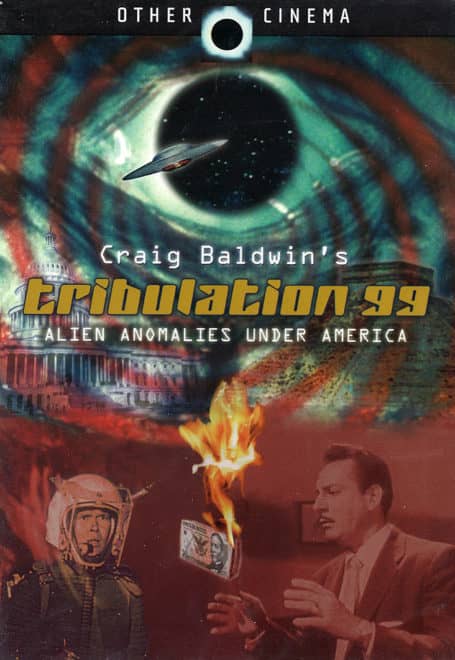


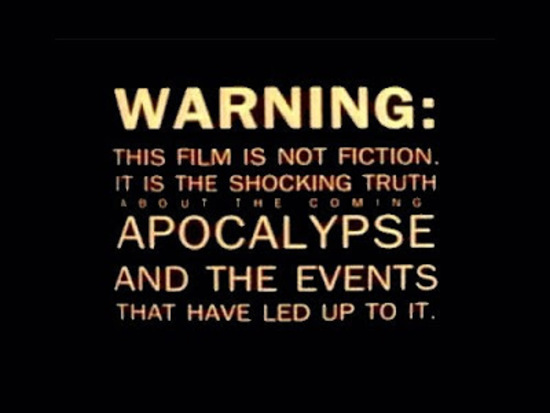
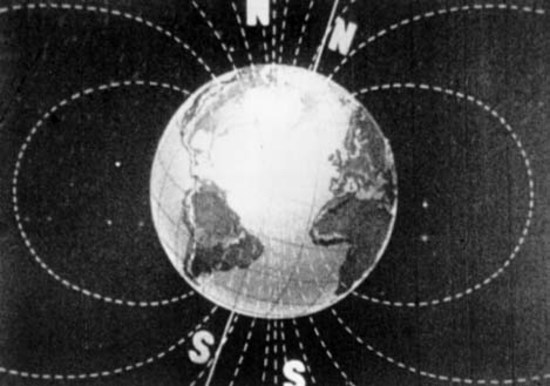
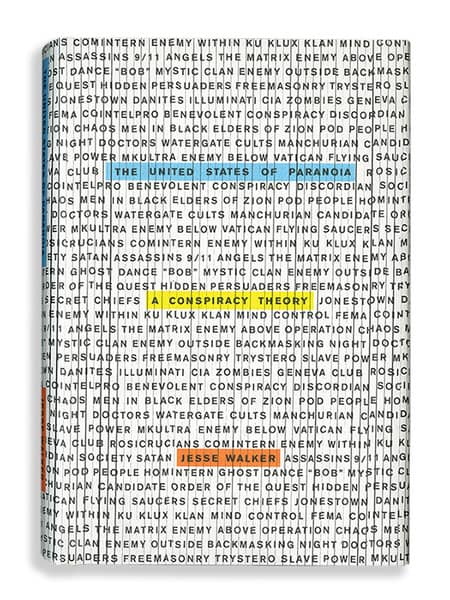
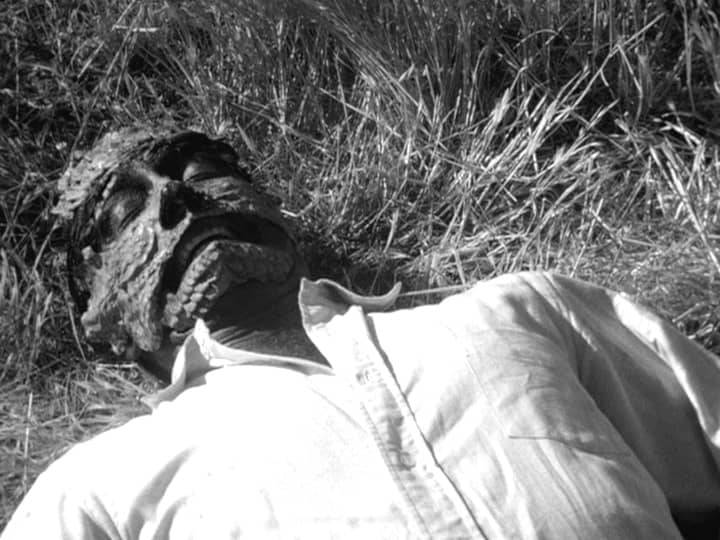
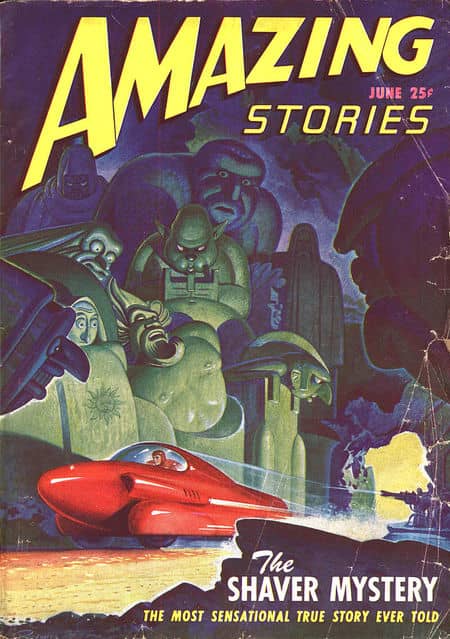
Intriguing! I particular like how (if I understand you correctly) he deployed a conspiracy theory to satirise the basis of most conspiracy theories.